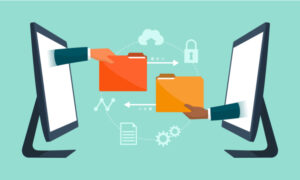Introduction
A theoretical framework serves as a conceptual map that helps researchers and practitioners navigate the intricacies of a subject. In the context of Korean loan information, a theoretical framework acts as a foundation for comprehending the underlying principles and mechanisms that govern the lending landscape. By establishing a theoretical framework, we can better understand how loans function, the factors that influence them, and their implications for borrowers and lenders.
Understanding Korean Loan Information
Before diving into the key concepts and applications of the theoretical framework for 이지론 loan information, let’s first gain a broader understanding of what it entails. Korean loan information encompasses the knowledge, data, and resources related to loans available in Korea. It includes information on various loan types, such as personal loans, mortgages, business loans, and student loans, among others.
To access Korean loan information, individuals can turn to multiple sources. Financial institutions, such as banks and credit unions, provide detailed information about their loan products and services. Additionally, government agencies, online platforms, and credit bureaus offer valuable resources to educate and assist borrowers in their loan-related decisions.
Key Concepts in the Theoretical Framework for Korean Loan Information
- Loan types and categories: Korean loans are diverse and cater to different needs, such as home purchases, education, business expansion, and more. Understanding the distinctions between these loan types is crucial for selecting the most suitable option.
- Loan eligibility criteria: Each loan has specific eligibility requirements, including factors like income, credit history, employment status, and collateral. Familiarizing oneself with these criteria helps borrowers assess their chances of approval.
- Loan terms and conditions: Loan terms encompass the duration of the loan, repayment schedules, and other contractual details. These terms and conditions vary across loans, and understanding them is vital for financial planning and budgeting.
- Loan repayment options: Korean loans offer various repayment options, such as fixed installments, adjustable rates, and balloon payments. Knowing these options helps borrowers choose the most manageable repayment plan.
- Interest rates and fees: Interest rates significantly impact the cost of borrowing. Understanding how interest rates are determined and the associated fees helps borrowers assess the overall affordability of a loan.
- Loan application process: Navigating the loan application process smoothly requires knowledge of the required documents, the steps involved, and the timeline. Being aware of the application process streamlines the borrower’s experience.
By grasping these key concepts within the theoretical framework for Korean loan information, individuals can make informed decisions when seeking financial assistance. Now, let’s explore the practical applications of this framework in various contexts.
Applications of the Theoretical Framework for Korean Loan Information
- Consumer education and awareness: The theoretical framework serves as a valuable tool for educating borrowers about the intricacies of Korean loans. By disseminating information on loan types, eligibility criteria, and repayment options, borrowers can make better financial decisions and avoid potential pitfalls.
- Loan product development and innovation: Financial institutions can leverage the theoretical framework to develop new loan products and services that cater to specific customer needs. By analyzing the key concepts and understanding market trends, lenders can tailor their offerings to meet the evolving demands of borrowers.
- Risk assessment and management: Theoretical frameworks aid lenders in assessing the risk associated with different loan types and borrowers. By analyzing variables such as credit history, income stability, and loan terms, lenders can make informed decisions on loan approvals, interest rates, and appropriate risk management strategies.
- Policy formulation and regulation: Policymakers and regulatory bodies can utilize the theoretical framework to establish guidelines and regulations that ensure fair lending practices and protect consumer interests. By understanding the key concepts, policymakers can draft policies that foster a transparent and responsible lending environment.
Conclusion
In conclusion, the theoretical framework for 이지론 loan information is a vital resource for understanding the key concepts and applications in the realm of loans. By delving into the various aspects, such as loan types, eligibility criteria, terms, and repayment options, borrowers can make informed financial decisions, while lenders can develop tailored products and manage risks effectively. Furthermore, policymakers can leverage this framework to create a conducive lending environment. To access more information and explore the world of Korean loans, visit the provided link below:



































